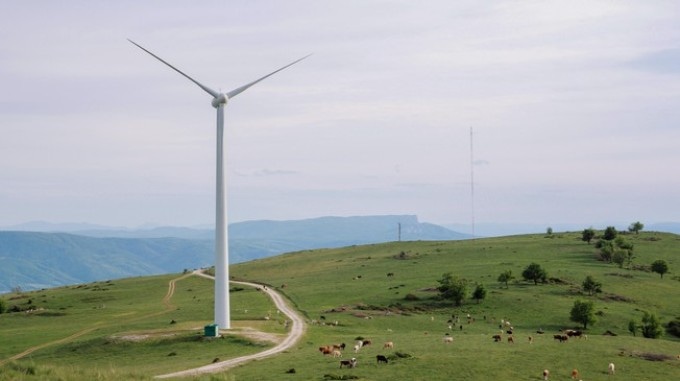Jun 25 2018
 A wind turbine in the Romanian Carpathians. Image Credit: EPFL, 2018.
A wind turbine in the Romanian Carpathians. Image Credit: EPFL, 2018.
EPFL scientists have built a simulator that is capable of calculating the performance of wind farms over 30 years while also taking into account the need to protect local biodiversity.
The simulator was tested at a site in the Carpathian Mountains in Romania, and could, therefore, be applied to the Swiss Jura area, which has a similar setting.
Three EPFL labs worked together to develop the model in collaboration with the University of Bucharest in Romania.
Scientists from the Wind Engineering and Renewable Energy Laboratory (WIRE), the Ecological Systems Laboratory (ECOS) and the Laboratory of Geographic Information Systems (LASIG) pooled their data and models with those of specialists from the University of Bucharest's Centre of Landscape–Territory–Information Systems (CeLTIS) as part of an innovative initiative in wind energy.
Their aim is to give the local authorities a model which they can use to mimic in a particular landscape the wind energy potential in the long run, bearing in mind the evolution of the landscape and its biodiversity: the model allows to combine, for example, the role of agricultural land usage.
This is crucial for maintaining the right balance between pastureland and arable land, which can help to produce strong winds, and natural woodland, where the trees are likely to diminish the performance of wind farms.
This research was part of the WindLand project sponsored by the Swiss National Science Foundation, via a scientific collaboration involving SCCER-FURIES, InnoSuisse, and Romania.
The case study replicated the impact of land use policy on biodiversity and wind energy potential in the Southern Carpathians, despite the fact no such project is underway in the immediate future.
Don't shoot for maximum production
For authorities keen on building a wind farm, the model offers data on how much wind energy can be created and how diverse the landscape has to be so as to preserve local biodiversity.
According to the research, if the surrounding area is mostly woodland, the wind farm will yield just 60% of its maximum capacity and biodiversity will be moderate. If the area is completely cleared for intensive farming and pasture, the wind farm will be at full production, but biodiversity will be significantly reduced due to the dull landscape.
When the correct balance is struck between forest and agricultural land, the wind farm can maintain 70–80% of its production capacity, and biodiversity stays high due to the heterogeneous landscape and varied habitats. Another benefit of this multidisciplinary integrated model is that it quantifies the energy production of the wind farm during its useful life.
The landscape and topography of the Carpathian Mountains are similar to those of Switzerland's Jura region, with mountains—ranging from 930 to 1,400 m—filled with fields, forests, and pastures, as well as individual trees. The model could thus be used in Switzerland as well.
Our findings show that it's possible to reach a compromise between biodiversity and wind-energy production and that trying to achieve maximum energy output straightaway is an error."
Jiannong Fang, Lead Author, The WIRE Lab
Since the collapse of communism, large areas of wooded pastureland, which spanned half of the Carpathian region, have been left uninhibited. These areas used to be highly biodiverse, and the strong winds would have made them a perfect spot for a wind farm.
Now, the forest is demanding back its territory. The EPFL-developed simulator aims to establish how the landscape can be used effectively for wind production while also maintaining the region’s current biodiversity.
Climate change may have a slight impact on our findings. Adding various climate scenarios relating, for instance, to changes in humidity and vegetation would make our model's predictions even more reliable and could be the topic of a future work."
Jiannong Fang, Lead Author, The WIRE Lab